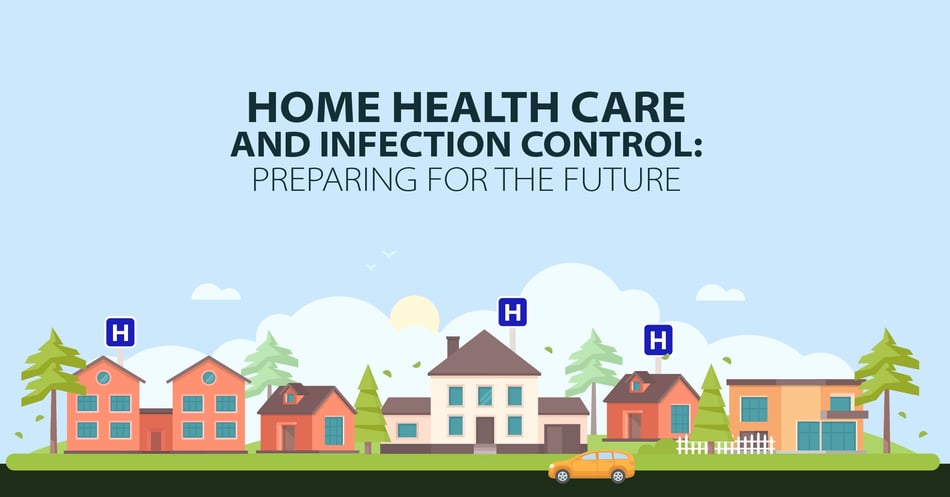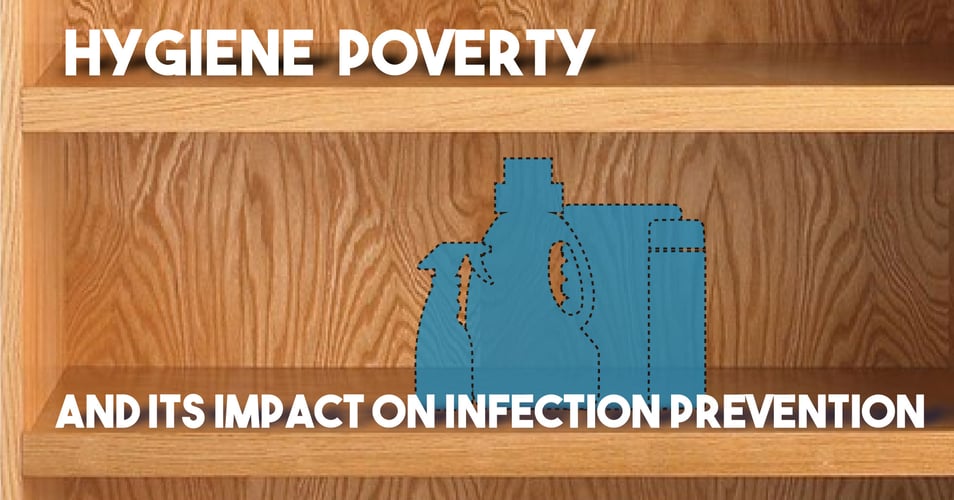Home Health Care and Infection Prevention: Preparing for the Future

Home health care has been growing steadily for the past decade and shows no sign of slowing. A growing number of health care services are being provided in the home of the patient, including IV medications, enteral nutrition, injections, and wound care. There are many advantages to home health care: It is less expensive for the patient and third party payers (private insurance, Medicare), it is more comfortable and convenient for the patient, and it can have the same positive outcomes as a hospital or other medical facility. However, home health care does have disadvantages, including effective infection prevention. In today's post, we will look at four key issues in home health care infection control and prevention that will need to be resolved as we enter the future of home health care.
Today, there are upwards of 12,000 home health care agencies in the United States serving over 4.5 million patients any given year. A huge portion of those patients receive coverage through the Centers for Medicare and Medicaid Services, or CMS. Most of the agencies are for-profit companies providing a range of medical services in addition to home health care, including running skilled nursing facilities and long-term therapeutic and rehabilitation facilities. As these agencies increase their home health care footprint, they will need to focus on these four critical areas.
#1: Education and monitoring of non-healthcare-worker caregivers. Between visits, the patient in home treatment receives care from family or other members of their support system. In order for them to provide care that requires infection prevention protocols (giving injections, cleaning devices, wound care), these caregivers must all receive training and then be supported through monitoring, correcting, and reteaching. The use of telehealth offers an efficient opportunity to increase contact with caregivers, allowing medical staff to check in with a household and answer questions, observe a treatment, and provide additional training.
#2 Collect, analyze and use data. There is no national surveillance program for home health care as there is for medical facilities (NHSN). However, many agencies do attempt to collect data on infection rates, hand hygiene, and other critical infection prevention strategies. Often, however, agencies collect the data and then fail to analyze it quickly enough to make medical decisions (if they analyze it at all). Those that do analyze the data often fail to implement changes that reflect that data. A huge step towards correcting the data use issue is ensuring that each agency employ infection preventionists to guide and surveille. Today, clinical managers or other supervisors have infection prevention as just one of their many roles, and IP can often fall to the side as they attempt to manage immediate patient care issues. Dedicated IP professionals would ensure that data is collected and analyzed, and most importantly, could use that data to identify possible spikes or outbreaks before they become a crisis.
#3 Lack of consistent caregivers, both medical and personal. Home health care is experiencing a significant staff shortage just like the rest of the medical field. This means patients experience more turnover in their caregivers, or that they receive suboptimal care as their visiting practitioner juggles too many patients. As agencies struggle to hire enough medical staff, the visiting practitioners also struggle to help patients with inconsistent caregivers in their support system, including family and friends. If the patient lacks enough of a support system to provide care between visits, their outcomes are worse, and their risk of infection goes up. Solutions to this problem are larger than can be handled by any one entity, but home health care agencies must still have strategies in place for this inevitability, while scheduling more frequent visits for solitary patients might be necessary.
#4 Lack of infrastructure at the home. Many patients would rather receive care at home, but not all patients have a stable infrastructure to accommodate that help. If the home is in disrepair or utilities have been shut off, maintaining good hygiene is next to impossible without support. In the worst cases, the patient may require additional mobile infrastructure to help keep their environment as clean as possible. Mobile water tanks and air filtration would help, as would biocidal materials on mobile equipment such as patient bedrails, overbed tables, and IV poles. These investments would result in better patient outcomes, but also prevent expenditures on avoidable infections.
Home health care is about to become a much more regulated space. The 2020 Patient-Driven Groupings Model uses more clinical characteristics in order to favor VALUE over VOLUME, discouraging unnecessary care. This dovetails into the Home Health Value-Based Purchasing Model to be rolled out nationally in 2023. Both of these modernizations will place even more emphasis on reducing preventable infections, so home health care agencies need to start planning for that future today.
![EOScu Logo - Dark - Outlined [07182023]-01](https://blog.eoscu.com/hubfs/Eoscu_June2024/Images/EOScu%20Logo%20-%20Dark%20-%20Outlined%20%5B07182023%5D-01.svg)




